
Localizing email: Tailor your email marketing by location
Customer retention is becoming more and more important. World events put brakes on expansions and marketing budgets. Your ecommerce brand probably is also having a hard time growing when people are watching their wallets more carefully. You’ve heard our mantra before and now it’s more relevant than ever: finding new ways to engage your existing customers and drive repeat orders is key to your ecommerce store’s financial stability.
Read more:
Customer retention in times of crisis
Where to start with Retention Marketing
Emails that drive repeat sales
The secret ingredient in truly relevant emails
Why location-based segmentation makes sense
We now know email personalization has to be done in a non-invasive way. Location is one of the data bits customers fully understand they share with merchants. It is in the nature of the transaction so it’s alright to be used openly for segmentation.
But what makes customer location an excellent filter for segmentation is its relevance. People love relevant and thoughtful communication, and location can make it such. A significant part of the needs and buying decisions depend on location:
- what products someone needs,
- when they buy them,
- how much they use them.
Location also influences cultural perceptions, usage habits and customer expectations. Taking all this into account will make your email campaigns more fitting, more considerate of your buyers’ needs.
Related: Customer segmentation in ecommerce
If you want to engage your customers with timely content and offers for their needs, location-based emails are great. Tailored enough to hit the right note, but innocent enough not to put them off. When your marketing strategy is based on customer retention, every opportunity for meaningful and differentiated engagement should be used.
Emails tailored by location ideas
Customer segments by location give you more touch points for engagement. Depending on location, there are various reasons to contact your customers. And you can offer them more relevant products and information.
Shopping behavior by weather
It’s important to note that weather varies across your customers’ locations. One blanket campaign with a stereotypical call to action might not work.
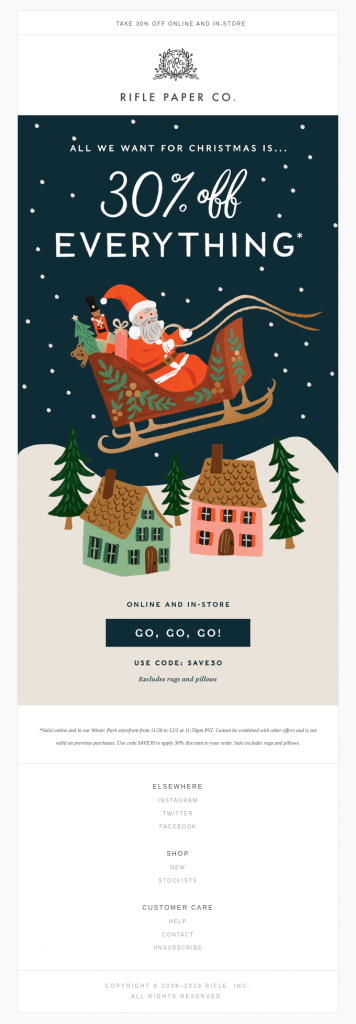
This email from the Rifle Paper Co. is awesome but too Northern Hemisphere-oriented for a global store.
- If you sell globally, note that the Southern Hemisphere has seasons reversed so your snowy Christmas visuals won’t work in Australia where Christmas is in the summer.
- In the US, states have very different climates – it might be scorching hot in Texas while a snow storm batters North Dakota. So choose suitable products and copy to reach each segment of customers.
- If you are a fashion brand, you know European customers dress differently from US ones. For example, European women don’t mind wearing tights, boots and warm padded coats in winter while US fashionistas are not as practical and often wear open shoes and light coats even when it’s cold. That’s why marketing sandals for New Year’s to Europeans would be less successful than to US customers as the NET-A-PORTER does.
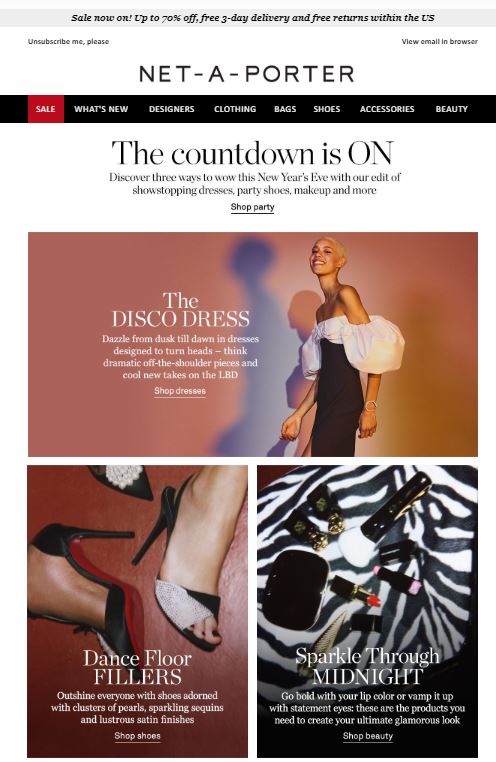
Email targetted at US customers, taking into account their fashion tastes for New Year’s Eve outfits.
Shopping habits vary across countries
Customer location goes hand in hand with cultural differences that impact buying behavior. Timing your email campaigns by location means you will be more adequate to local seasonal changes in buying.
- “Back to school” campaigns should be timed differently by country. The school year starts in September in the US and most of Europe, but in April in Japan and in mid-January in South Africa.
- People in the UK peculiarly buy swimwear mostly in January and February because they go on exotic vacations during the children’s spring break from school. For the average European swimwear buying comes in May before the first weekends by the sea. And Australians surely have it all upside down! 🙂
- Holidays also vary across cultures – Mother’s Day is celebrated in May in the USA, Canada, Australia and New Zealand, in March in Eastern European countries and in October in Argentina, just to name a few. You can’t have one Mother’s Day campaign if you want to reach different countries. Some of them will simply ignore your email because it’s not the right time for them.
Language differences
When segmenting your email list by location, language should be considered, too.
- French, German, and Spanish speakers prefer to communicate in their native language. Doing them the courtesy will enhance their experience and make them trust you more.
Tip: Get a native speaker to write or proof-read your email copy to make sure your brand is presented in the best possible way, without mistakes.
- People speaking the same language use different words for one and the same product: a jumper (British English) can be either a cardigan or a pullover (also called sweater) in American English. Not that they wouldn’t understand what you mean if you use the other word, but it makes a good impression that you speak their language.
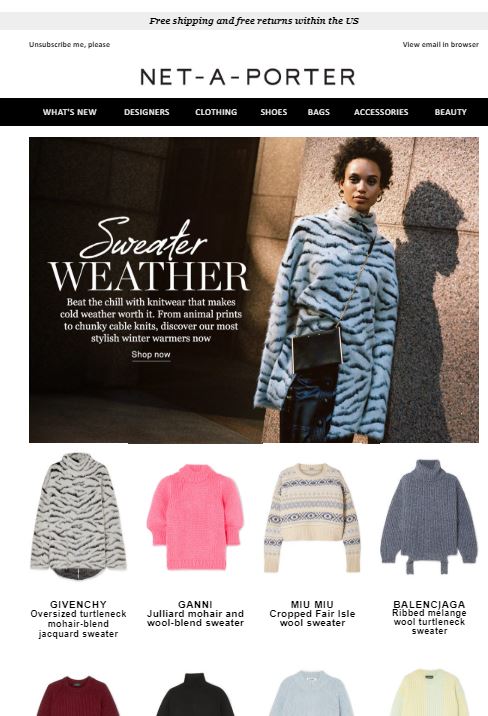
Net-a-porter American English speakers would surely appreciate the proper use of “sweater” in this email. It’s good it was targeted at US customers only.
Cultural differences
One reason why location is so important and should not be overlooked in marketing is because it impacts people’s culture, customs and perceptions. What’s normal in one culture is considered rude in another. You should learn the nuances in order not to irritate but delight your customers.
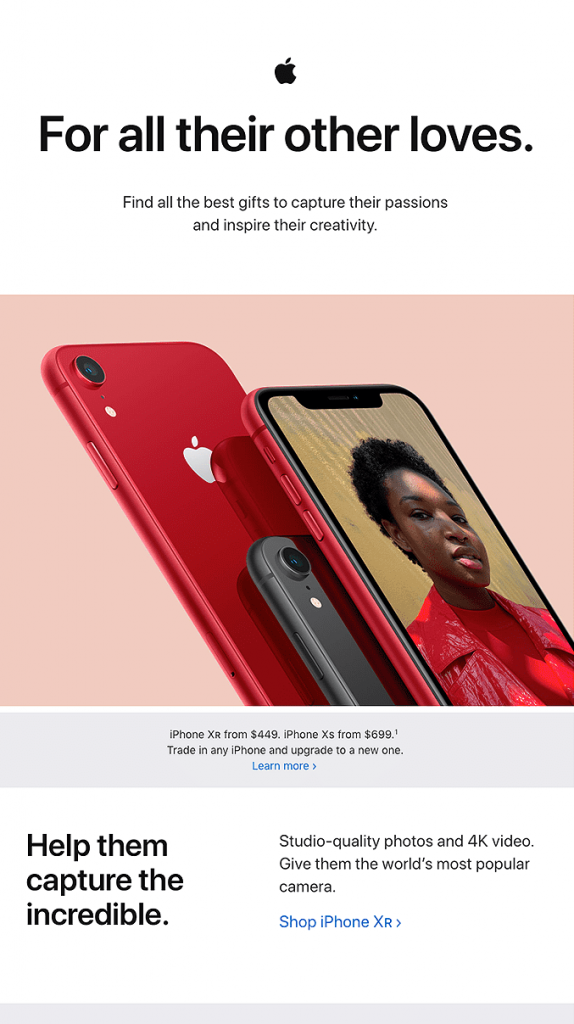
Red is not the universal color of love.
- One example is the perception of color across cultures. Bridal colors are different. You cannot promote red wedding guest dresses in India because red is reserved for the bride. Also, the color of love is green in Hindu culture and blue in African culture, so all-red Valentine’s Day promos are a bit off.
Related: The meaning of colors in marketing
- Social issues also vary and should be treated with sensitivity if you want to connect with your customers and not chase them away. The Black Lives Matter movement, for instance, is huge in some parts of the world. But in others people don’t experience the conflict first-hand so it is irrelevant for brands to discuss it. A BLM-supporting initiative will not get much of a response there.
Local promotions
While you’re a small ecommerce brand, it can be hard to organize events for your whole client base. This doesn’t mean you should not start locally and expand later. Maybe you have the chance to cater for a local gallery opening or will take part in a farmer’s market. It’s worth telling your customer from the region about it in case they want to come see you. Offline and online should mix and cross-promote each other. So your only option here is to filter only the people in this particular location and invite them to the event. Otherwise, the others will feel left out and alienated by the brand. This would have a negative effect on customer experience and loyalty.
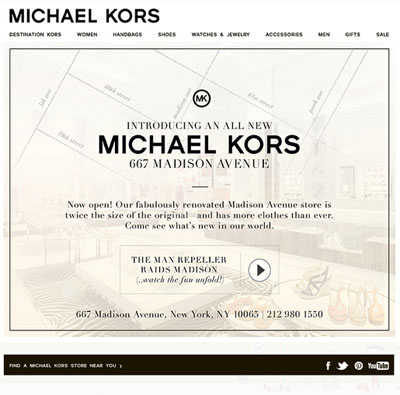
Store openings are great for localized email engagement.
You see, there are lots of nuances in communication with people in different countries and even cities so tailoring emails by location is key. Your marketing can be on point with any customer group, delivering the right message in their language, creating stronger bonds. “Global” appeal is tricky – generic and disengaged at best. For good or bad, people understand words, visuals, colors and messages differently. It’ll do your brand good to get to each their own in order to be understood correctly.
Learn more
Build and grow your ecommerce brand
Metrilo’s mission is to help you build your ecommerce brand and win your place in the customer’s heart. We share what we learn from our daily work with product innovators and founders here. Subscribe to our weekly newsletter to get the freshest lessons and conquer your niche.
We promise, no spam.
Thank you for subscribing!
See you soon :-)



